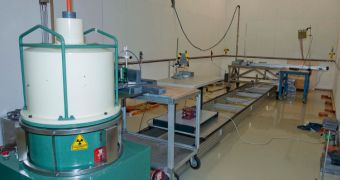The operational excellence of the cobalt-60 irradiation facility that the European Space Agency (ESA) operates in the Netherlands has been official recognized recently, when experts gave the installation its ISO accreditation.
The irradiation chambers are located at the ESA European Space Research and Technology Center (ESTEC), in Noordwijk. While it has been in operation for years, it's only now that its unique abilities have been official awarded with the new accreditation.
The cobalt-60 unit is usually conducting irradiation experiments using gamma-rays. According to ESA officials, exposure to radiation is one of the most important tests that a future spacecraft is subjected to before it is deemed flight-worthy.
Delicate electronic parts are subjected to remarkably tough conditions while in space, and it's the purpose of the irradiation facility to emulate those situations on the workbench. The data experts acquire in this manner is sufficient to inform any future modifications to the spacecraft.
ESA built its cobalt-60 installation specifically for the production of gamma-ray, in a room with thick walls, isolated from the outside world by a door weighing 700 kilograms. The walls themselves are 70 centimeters thick, but can reach up to 1.5 meters in thickness in some places.
Within just a few days, the Co-60 source can emulate years-worth of exposure to cosmic radiation. In this manner, experts can figure out how a satellite or telescope will endure in space in the long run.
Now, this installation has an ISO 17025 accreditation, which was provided by the Dutch Accreditation Council (RvA), under the specifications set forth by the International Organization for Standardization.
This type of ISO is awarded for meeting the “general requirements for the competence of testing and calibration laboratories.” The implication of this is that all tests conducted at this facility provide results within established uncertainty margins, SpaceRef reports.
At the same time, users can be sure that the test conclusions follow the most rigorous testing and quality procedures to international standards of strictness and transparency. Furthermore, an ISO accreditation guarantees that all results are reproducible and repeatable.
“We were the first facility in ESA's Product Assurance and Safety Department to apply for ISO 17025 accreditation,” explains ESA Quality Assurance section expert Raul Alarcon.
“The cobalt-60 facility was seen as a good starting point because we have many external customers, averaging a different project every week, and offer a single, well-focused service,” he concludes.

 14 DAY TRIAL //
14 DAY TRIAL //